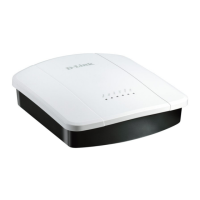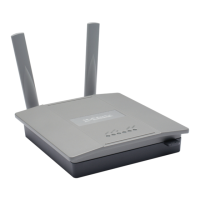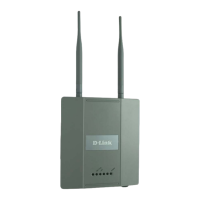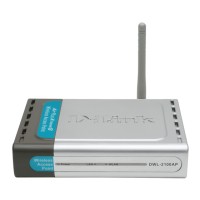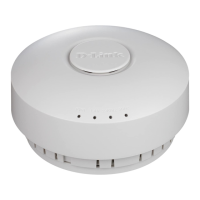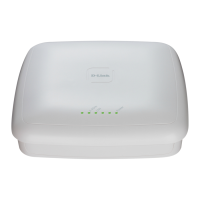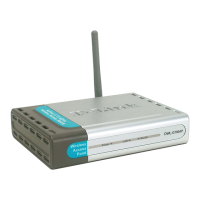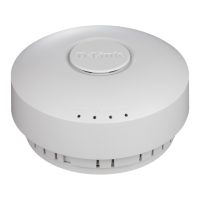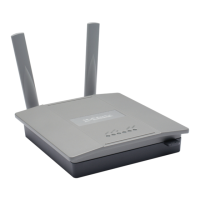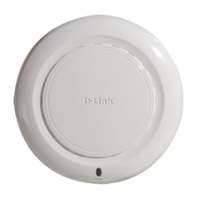Software User Manual D-Link UAP
12/10/09
34CSFP6XXUAP-SWUM100-D13 Configuring Quality of Service (QoS) Page 75
cwMin
(Minimum Contention
Window)
This parameter is used by the algorithm that determines the initial random backoff wait time
(window) for retry of a data transmission during a period of contention for Unified Access Point
resources. The value specified here in the Minimum Contention Window is the upper limit (in
milliseconds) of a range from which the initial random backoff wait time will be determined. The
first random number generated will be a number between 0 and the number specified here. If
the first random backoff wait time expires before the data frame is sent, a retry counter is
incremented and the random backoff value (window) is doubled. Doubling will continue until the
size of the random backoff value reaches the number defined in the Maximum Contention
Window.
cwMax
(Maximum Contention
Window)
The value specified here in the
Maximum Contention Window
is the upper limit (in milliseconds)
for the doubling of the random backoff value. This doubling continues until either the data frame
is sent or the Maximum Contention Window size is reached.
Once the Maximum Contention Window size is reached, retries will continue until a maximum
number of retries allowed is reached.
TXOP Limit The TXOP Limit is a station EDCA parameter and only applies to traffic flowing from the client
station to the AP. The Transmission Opportunity (TXOP) is an interval of time, in milliseconds,
when a WME client station has the right to initiate transmissions onto the wireless medium
(WM) towards the Unified Access Point. The TXOP Limit maximum value is 65535.
Other QoS Settings
No Acknowledgement Select On to specify that the AP should not acknowledge frames with QosNoAck as the service
class value.
APSD Select On to enable Automatic Power Save Delivery (APSD), which is a power management
method. APSD is recommended if VoIP phones access the network through the AP.
Note: After you configure the QoS settings, you must click Apply to apply the changes and to save the settings.
Changing some settings might cause the AP to stop and restart system processes. If this happens, wireless clients
will temporarily lose connectivity. We recommend that you change AP settings when WLAN traffic is low.
Table 33: QoS Settings (Cont.)
Field Description
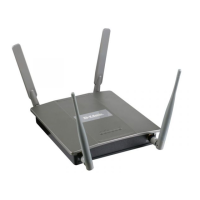
